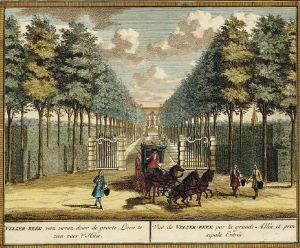Henrick De Leth Paintings
Hendrik de Leth was a Dutch artist and engraver, born in 1703 in Amsterdam, Netherlands. He was known for his detailed landscapes, cityscapes, and particularly for his skill in engraving. De Leth's work is emblematic of the Dutch Golden Age's later period, capturing the intricate details of daily life and the expanding urban and rural landscapes of 18th century Netherlands. His contributions to art not only include his original creations but also his reproductions of other artists' works, which played a significant role in disseminating the styles and tastes of the period.
De Leth's career was largely centered in Amsterdam, where he worked and lived throughout his life. He inherited his position in the art world from his father, Hendrik de Leth, who was also an accomplished engraver and publisher. This familial connection provided Hendrik the younger with an extensive network and a solid foundation in the techniques of engraving and printing. Over the years, he built a reputation for his meticulous engravings and his ability to capture the essence of the subjects he depicted, whether they were landscapes, maritime scenes, or urban vistas.
In addition to his engravings, Hendrik de Leth was also involved in the production of maps and atlases, contributing to the growing interest in geography and exploration of the time. His works were not only appreciated for their artistic merit but also for their utility in navigation and exploration.
De Leth's legacy is preserved through his contributions to the collections of various museums and archives around the world. His engravings continue to be studied and admired for their historical value and their beauty, offering insights into the Dutch landscape and society during the 18th century. Hendrik de Leth passed away in 1766, leaving behind a body of work that continues to be celebrated for its precision and attention to detail.

